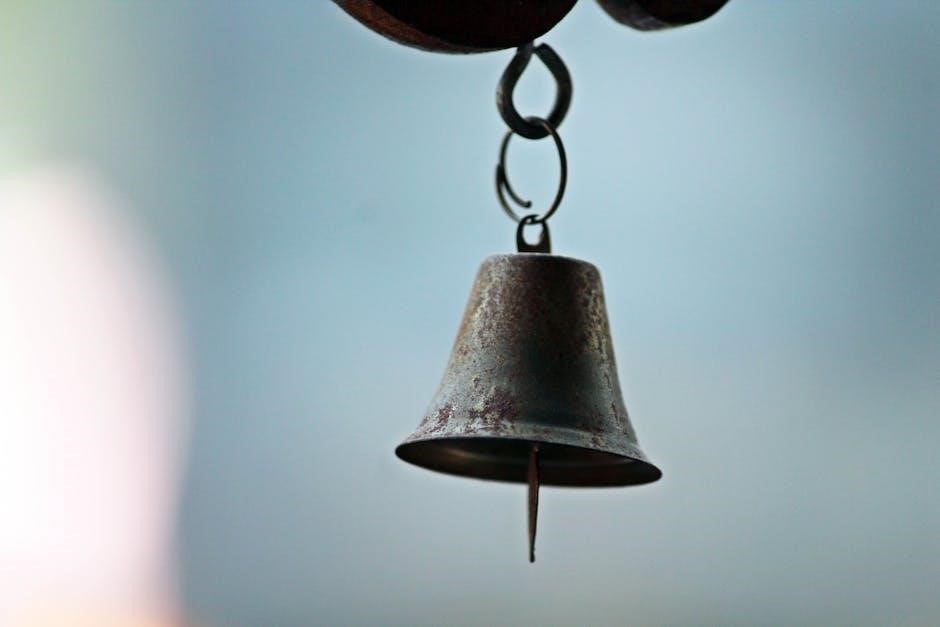
ring sling instructions
A ring sling is a popular babywearing option, offering versatility and ease of use; It consists of a fabric strap with rings, allowing adjustable positioning for newborns and toddlers, promoting comfort and convenience for caregivers.
1.1 What is a Ring Sling?
A ring sling is a baby carrier made from a fabric strap with two metal rings at one end. It allows for adjustable positioning, creating a secure and comfortable seat for the baby. Suitable for newborns to toddlers, the sling is worn over one shoulder, with the rings enabling easy tightening and loosening of the fabric to customize the fit for both caregiver and baby.
1.2 Benefits of Using a Ring Sling
A ring sling offers exceptional versatility, accommodating newborns to toddlers. It provides easy breastfeeding access and promotes bonding. The adjustable design ensures a comfortable fit for both caregiver and baby, while the lightweight fabric makes it ideal for warm weather. Additionally, it allows for multiple carrying positions, including front, hip, and back carries, making it a practical choice for daily use and outdoor activities.

Choosing the Right Fabric for Your Ring Sling
Selecting the right fabric ensures comfort and safety. Opt for breathable, durable materials like cotton or linen, suitable for all seasons, and prioritize soft, non-toxic fabrics for your baby’s skin.
2.1 Recommended Materials for Comfort and Safety
For a ring sling, choose materials like cotton, linen, or bamboo for breathability and softness. These fabrics are gentle on baby’s skin and durable for long-term use. Avoid synthetic materials that may cause irritation. Opt for non-toxic dyes to ensure safety. The fabric should be medium-weight to provide adequate support without being too heavy. Natural fibers are ideal for regulating temperature and ensuring comfort for both wearer and baby.
2.2 How to Measure and Cut Fabric for a DIY Ring Sling
Measure 2-3 yards of fabric, depending on your size and desired tail length. Cut the fabric to 25-30 inches wide for a standard sling. Ensure the fabric is straight and not twisted before cutting. Use scissors or a rotary cutter for a clean edge. Avoid stretchy materials and opt for medium-weight fabrics like cotton or linen. This ensures safety and comfort for both the wearer and baby.

Safety Precautions When Using a Ring Sling
Always ensure the rings are secure and fabric untwisted. Monitor baby’s airway and avoid bulky clothing. Regularly inspect the sling for wear and tear to maintain safety.
3.1 Ensuring Proper Baby Positioning
Proper positioning is crucial for your baby’s safety and comfort. Ensure the baby’s face is always visible and at or above the upper edge of the sling. The baby should be held in a chest-to-chest position, with their head close to your chin for easy monitoring. Keep the baby’s bottom lower than their knees to support their natural spine curvature. Avoid over-bundling and ensure the sling’s fabric is untwisted for a secure, even seat. Regularly check your baby’s position to ensure comfort and safety.
3.2 Avoiding Common Safety Mistakes
Avoid common safety mistakes by ensuring the sling is snug and the fabric is untwisted. Never cover the baby’s face or head with fabric, and keep loose ends secure. Ensure the rings are tightly closed to prevent slipping. Over-bundling or improper fabric tension can compromise safety. Always maintain visibility of your baby and keep their airway open. Regularly inspect the sling for wear and tear to ensure durability and reliability during use.

Step-by-Step Instructions for Using a Ring Sling
Start by draping the sling over your shoulder, positioning the rings near your collarbone. Gently place your baby in the hammock, ensuring their head is above the fabric and their knees are slightly bent for optimal support and comfort.
4.1 Threading the Sling Through the Rings
Hold the ring sling with the rings in one hand and the tail end in the other, ensuring the fabric is not twisted. Loop the tail through the bottom ring from below, then bring it up and through the top ring. Gently pull the fabric to create a smooth, untwisted path through both rings. This ensures a secure and adjustable fit for your baby.
4.2 Placing the Baby in the Sling
Ensure the sling fabric is untwisted and the upper rail aligns with your baby’s shoulder. Hold your baby close, supporting their head and neck, and gently lower them into the sling. Their bottom should rest in the hammock seat, knees slightly bent. Adjust the sling to ensure proper positioning, keeping their head visible and kissable. Secure the fit by pulling the tail of the sling through the rings to tighten evenly.
4.3 Adjusting the Fit for Comfort and Security
Gently pull the tail of the sling through the rings to tighten, ensuring the fabric isn’t twisted. The baby’s head should remain above the sling’s edge, with knees slightly bent. Adjust the sling to support their natural posture. For smaller frames, tie the wrap at the front; for larger frames, tie at the back. Ensure a snug fit for comfort and security, allowing easy monitoring of the baby’s position and breathing.

Different Carrying Positions
A ring sling allows for versatile carrying positions, including front carry for newborns, hip carry for older babies, and back carry for toddlers, promoting comfort and bonding.
5.1 Front Carry for Newborns
The front carry is ideal for newborns, allowing close contact and easy breastfeeding. Place the baby in the sling with their head at the top edge, facing you. Ensure the upper rail aligns with their ear level for proper support. Tighten the sling gently, keeping the baby snug and secure. This position promotes bonding and is perfect for the first few months of life, ensuring comfort and safety.
5.2 Hip Carry for Older Babies
The hip carry is ideal for older babies, offering a comfortable and ergonomic position. Place the baby on your hip, with their legs supported and torso upright. The sling should be adjusted to ensure the baby’s weight is evenly distributed, promoting natural spine alignment. This carry allows the baby to observe surroundings while maintaining close contact, making it perfect for curious older infants who enjoy exploring their environment.
5.3 Back Carry for Toddlers
The back carry is a great option for toddlers, as it allows them to explore their surroundings while being securely held. Position the sling across your back, ensuring the fabric is evenly spread. Guide the toddler onto your back, with their legs straddling your hips and their torso upright. Adjust the sling to support their weight and maintain a natural spine alignment. This carry promotes comfort and freedom for both caregiver and child.

Advanced Techniques for Ring Sling Use
Mastering advanced techniques enhances comfort and versatility. Learn to nurse discreetly, adjust the sling for different body types, and explore creative carrying methods for optimal convenience.
6.1 How to Nurse Discreetly in a Ring Sling
To nurse discreetly, position your baby close with their head at your chest. Gently lower the top rail of the sling to allow easy access. Adjust the fabric to cover your shoulder and baby’s head for privacy. Ensure the sling is snug to maintain comfort and security. This method allows for subtle nursing in public while keeping your baby calm and content.
6.2 Adjusting the Sling for Different Body Types
Ring slings are customizable for various body types. For smaller frames, the fabric can be looped at the front or tied snugly at the back. Larger caregivers may prefer tying the sling at the hip or adjusting the rails for even weight distribution. Ensure the sling fits securely, with the baby’s bottom at knee level, for optimal comfort and support for both wearer and child.
Troubleshooting Common Issues
Troubleshooting common issues with ring slings involves resolving fabric twisting and adjusting for even weight distribution to ensure optimal comfort and safety.
7.1 Resolving Fabric Twisting
Fabric twisting in a ring sling can cause discomfort and affect safety. To resolve this, loosen the sling, rethread it through the rings, and ensure the fabric lies flat. Gently pull the edges to align them, then tighten evenly. Regularly checking the fabric’s position and adjusting as needed prevents twisting. If issues persist, consider alternating shoulders or sewing a guide stripe to maintain proper alignment during use.
7.2 Fixing Uneven Weight Distribution
Uneven weight distribution in a ring sling can cause discomfort. To fix this, loosen the sling, adjust the fabric across your shoulder, and reposition the rings. Ensure the fabric is evenly spread and the edges are aligned. Tighten the rings gradually, checking the balance. If the issue persists, try shifting the sling slightly or redistributing the fabric for a more comfortable and secure fit for both you and your baby.

Maintenance and Care Tips
Regularly wash your ring sling with mild detergent, avoiding harsh chemicals. Air-dry to maintain fabric integrity. Store in a cool, dry place when not in use.
8.1 Washing and Drying Your Ring Sling
Wash your ring sling with mild detergent in cold water to preserve fabric quality. Avoid bleach or fabric softeners, as they can weaken the material. Gently agitate by hand or use a delicate machine cycle. Air-dry the sling away from direct sunlight to prevent fading and maintain its shape. Avoid ironing near the rings, as heat can damage them. Regular cleaning ensures hygiene and longevity for safe babywearing.
8.2 Storing the Sling When Not in Use
Store your ring sling in a cool, dry place to prevent moisture buildup. Fold it neatly or hang it to avoid creases. Avoid leaving it in direct sunlight, as this can cause fading. Keep it away from pets or children to prevent damage. Proper storage maintains the sling’s condition, ensuring it remains ready for future use and continues to support safe and comfortable babywearing.
A ring sling offers comfort, versatility, and safety for babywearing. With proper care and use, it provides a secure and loving way to carry your baby, promoting bonding and convenience for parents.
9.1 Summary of Key Points
A ring sling is a versatile and practical babywearing solution, suitable for newborns to toddlers. It offers front, hip, and back carries, ensuring comfort and safety. Proper positioning, avoiding common mistakes, and regular maintenance are crucial. Threading the sling correctly and adjusting it for a secure fit are essential skills. Troubleshooting issues like fabric twisting and uneven weight distribution can enhance your babywearing experience. Following care tips ensures longevity and safety of the sling.